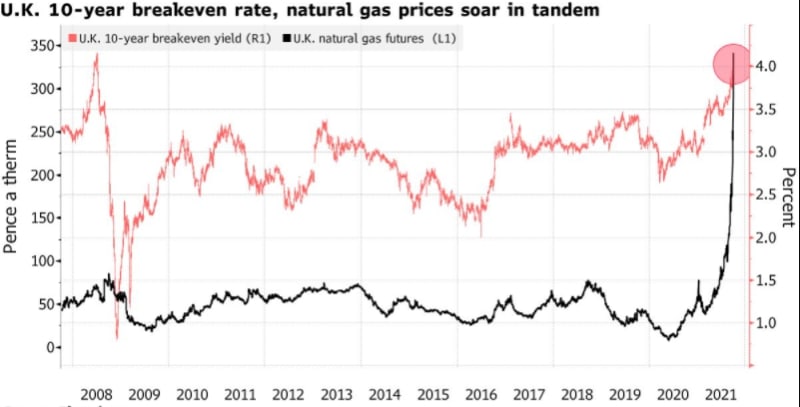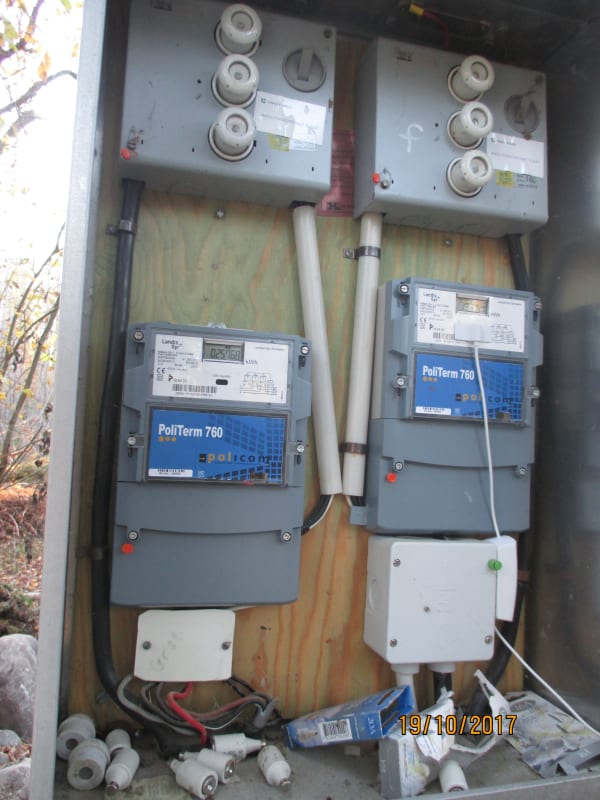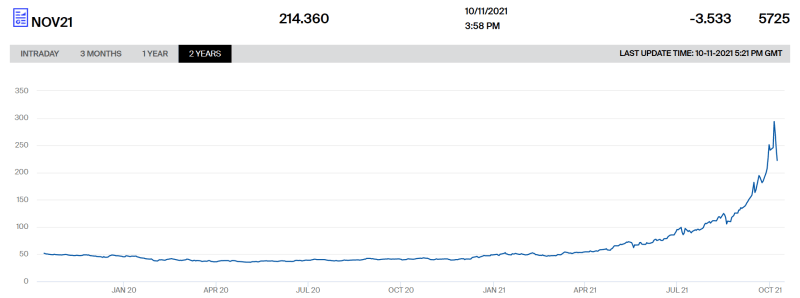Analysts noted that Ukrainian flows are tracking around 3.4 Bcf/d on average through early October – in line with the September average but down from an August average of 3.8 Bcf/d. Year-ago flows, meanwhile, tracked closer to 6 Bcf/d.
“Going forward, we model Russian imports into Europe ramping towards 17 Bcf/d through November-February,” TPH analysts said. This is largely accounting for the remaining room on the Ukrainian system, “which averaged around 7 Bcf/d in 4Q2020 should the Nord Stream 2 pipeline remain in gridlock.”
Regardless of capacity, TPH said Russia’s ability to flow incremental volumes appears likely to come down to end-of-season domestic storage balances, which have capped exports of late despite record domestic production.
As for demand, demand data across various countries appears to show demand destruction in play, according to TPH. October demand is up about 2 Bcf/d month/month at 29 Bcf/d, but lags its forecast of around 38 Bcf/d for October thus far.
European natural gas stockpiles could be completely drained over the next few months, leaving the continent wholly dependent on Russian pipeline imports if this winter turns out to be unseasonably cold in both Europe and Asia, according to an analysis from Wood Mackenzie.
Colder winter weather across the globe could raise European heating demand to 20 billion cubic meters (Bcm) and redirect up to 10.5 Bcm of cargoes from the continent to Asia. Combined, that would be greater than the 29 Bcm Wood Mackenzie anticipates would be in European storage at the end of March.
“There is a risk storage levels could drop to zero,” said Wood Mackenzie Vice President of Gas and LNG Research Massimo Di Odoardo.
If that happens, Europe would have to rely on “timely approval” of the Nord Stream 2 pipeline (NS2) or increased Russian flows through Ukraine to avoid demand curtailments, according to Di Odoardo. NS2 could deliver up to 12.5 Bcm through the winter, but it is so far unclear whether the project would move forward in time. Meanwhile, Russia has shown some reluctance to provide additional pipeline shipments via Ukraine. However, Wood Mackenzie noted President Vladimir Putin has promised to stabilize the market, which could result in increased volumes on that route.
Goldman Sachs Commodities Research analysts led by Samantha Dart said the remarks by Putin and other Russian officials reiterated statements made over the past few months.
“In our view, uncertainty remains regarding potential Russian gas flows to Northwest Europe this winter,” the analysts said in a recent note to clients. Goldman expects shipments from existing pipelines to normalize from reduced levels starting in November, and NS2 will come online this winter, adding 10 Bcm of supply to the continent.
“We see symmetrical risks to both these assumptions, as the recent decline in flows to
Europe could reflect the lack of enough supply to feed both European and Russian gas storage sites and with the potential for the NS2 pipeline to bring additional
[In the Know: Subscribe to NGI’s All New Access and gain the ability to read every article NGI publishes daily.]
volumes once approved,” the analysts said. “Until there is greater clarity on Russia’s gas send-outs to Europe, we expect European Union gas prices to remain volatile and skewed to the upside given the need for industrial user gas demand rationing if Russian flows remain low in November and December.”
European natural gas prices were again marked by volatility last week as panic over looming shortages continues. British and Dutch futures have been trading well above $30/MMBtu. The situation has prompted European Energy Commissioner Kadri Simson to promise reforms by the end of the year to combat similar volatility in the future.
On Friday, Bloomberg reported that the European Union (EU) would explore options to purchase more supplies and protect residents from huge price spikes.
If Russian flows increase this winter, Goldman expects EU prices to decline from current levels but remain above the threshold for gas-to-oil switching of $27/MMBtu at current oil prices “until we know more about winter weather,” the analysts said. Prices could decline further, to $17 by year’s end, if weather remains average, Goldman said.
Wood Mackenzie also expects prices to ease under normal weather conditions.
The consultancy predicts European storage would reach a record low 78% of capacity, or 87 Bcm by the end of October.
To meet demand, the continent would likely need around 58 Bcm of storage, leaving about 29 Bcm stockpiled by the end of March. That is below the five-year average, but “comfortably above” record lows, according to Wood Mackenzie. And while LNG imports are likely to be limited this winter as demand remains strong in Asia, rebounds in UK and Norwegian production as well as stronger exports from Algeria and Azerbaijan are forecast to increase pipeline supply compared to summer.
Still, whether prices go up or down would depend largely on the weather.
“The sky could be the limit for European gas prices this winter,” Wood Mackenzie said.




![[mad] [mad] [mad]](/data/assets/smilies/mad.gif)
![[lol] [lol] [lol]](/data/assets/smilies/lol.gif)
![[rofl2] [rofl2] [rofl2]](/data/assets/smilies/rofl2.gif)

![[ponder] [ponder] [ponder]](/data/assets/smilies/ponder.gif)
